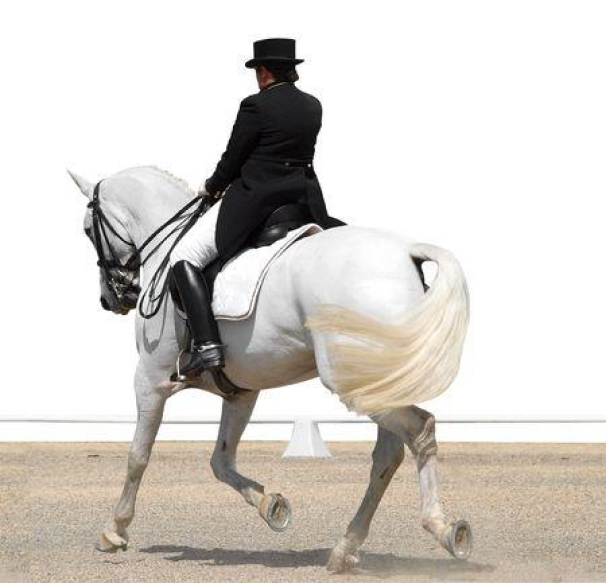What Is The Equestrian Sport Of Dressage?

Dressage often referred to as “horse ballet” is an equestrian sport where horse and rider work in harmony through a series of precise movements. Dressage is a French term that means training. The purpose of dressage is to develop a horse to its highest potential through a progressive training method. This sport emphasizes the natural ability of the rider’s mount. Dressage has its origins in Europe, but became a popular equestrian sport during the Renaissance. The riding masters of old developed a stepwise training system that was later coined Classical Dressage. This classical training method remains the basis of the modern dressage horse and rider.
All horses can benefit from dressage training. It is the foundation training for all future training. Many breeds are competed in the dressage arena. The most popular breeds of horse are the warmbloods. However when performing the classical dressage movements called the “airs above the ground” the most popular breeds are the baroque horses, such as Lipizzaner and Andalusian.
Dressage is performed in two sizes of arena. The small ring measures 20 by 40 meters (66 by 131 feet). The standard ring measures 20 by 60 meters (66 by 197 feet). There letters placed at certain intervals around the dressage ring. These letters help the horse and rider dictate where transitions in the pattern should take place.
The tests are scored from 0-10, 10 being the highest for each movement within the test. Then the final total is average and the score is given. Good scores range from the 60’s-70’s.
Dressage is most noted for its complicated and precise movements. The following can be found throughout the grand-prix level test.
Piaffe: An elevated trot in place.
Passage: Very collected trot in which the horse seems to skip due to higher elevation.
Extended Gaits: Typically seen at the trot and canter where the horse lengthens its stride.
Collected Gaits: A shortened stride gait where the horse comes from more underneath itself.
Flying Changes: This is a change of lead at the canter, when seen in a sequence it’s called a “tempi” change.
Pirouette: Is a 360 or 180 degree turn in place, typically performed at the canter.
Half-Pass: Horse moves sideways and forward at the same time while bent in the direction they are moving.
Dressage horses and riders today strive to perform movements with little effort and great harmony. They use the dressage pyramid for training goals. The training goals start with rhythm. A horse should maintain a rhythm in all gaits. Then relaxation is shown through looseness and smooth transitions. Next comes contact, where the horse becomes supple and comes more underneath themselves. The next training tool to the dressage pyramid is impulsion, the horse has a strong engagement from behind. Then straightness, where the rider aids carry the horse in straight and balanced lines. The top of the dressage training pyramid is collection. This final piece of the pyramid is what makes the difficult movements possible as the horse become light on the forehand and comes underneath itself moving the center of gravity to the rear.
So if you wish to train and build a harmony between you and your horse, you have found the discipline for you. Dressage the “Horse Ballet”.
Comments : 0